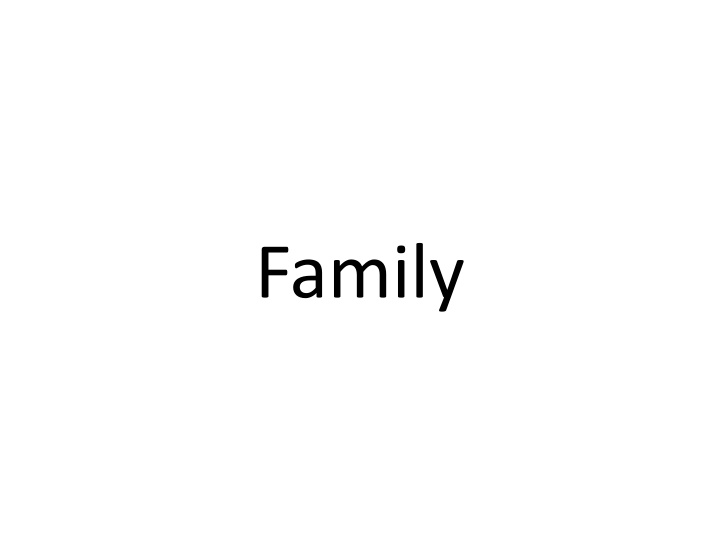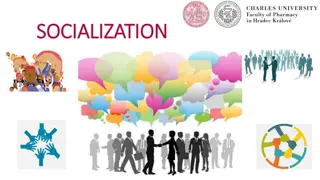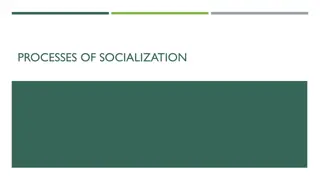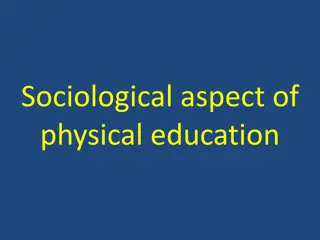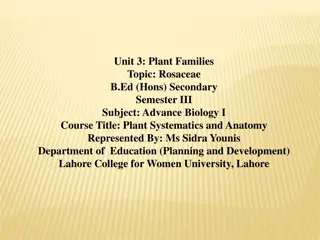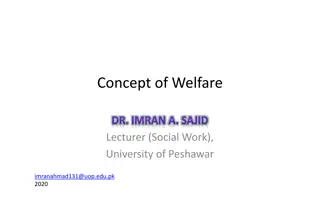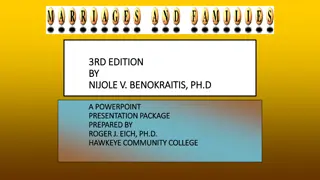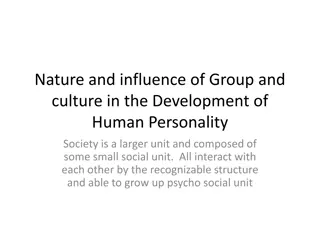Insight into Family Dynamics and Socialization
Families play a crucial role in shaping our identities through socialization. They act as agents of cultural transmission and social control, influencing our roles and behaviors. Socialization is a continuous process involving learning from parents, peers, and society. The changing dynamics of family relationships reflect evolving societal norms and structures. However, there is also a critical perspective on the darker aspects of family life that can impact individuals.
Download Presentation

Please find below an Image/Link to download the presentation.
The content on the website is provided AS IS for your information and personal use only. It may not be sold, licensed, or shared on other websites without obtaining consent from the author.If you encounter any issues during the download, it is possible that the publisher has removed the file from their server.
You are allowed to download the files provided on this website for personal or commercial use, subject to the condition that they are used lawfully. All files are the property of their respective owners.
The content on the website is provided AS IS for your information and personal use only. It may not be sold, licensed, or shared on other websites without obtaining consent from the author.
E N D
Presentation Transcript
Family and identity Families act as agents of socialisation (teaching us society s culture) and agents of social control (controlling our behaviour). We learn different social roles for example being a son or being a sister. Some are ascribed (given to us e.g. being a son or daughter) and some are achieved (chosen by us e.g. being a parent). All these roles and influences help to form our identity. We must remember that the family is only one of many groups that influence our identity.
Family and socialisation Socialisation is continually happening and is also a two way deal. Parents learn from their children as children continue to learn from their parents. Methods of socialisation Deliberate instruction Role models Positive/negative sanctions Play
Conclusion about non-socialised children Children need good physical care. Children have the ability to learn. Socialisation is essential in order to become a full member of society. The genes we inherit (which are given to us by our parents) only give us the potential to become members of society. Some children recover if their early socialisation is disrupted. If language learning starts too late a critical time might have been passed and language may never develop fully.
Changing family relationships Children are now more likely to Survive childhood. Be cared for by someone other than their parent in early years (often grandparent). Have better living conditions e.g. their own room, money and things . Have more parental supervision because parents worry about their safety. Have a say in family decision making. Be in cash rich but time poor families, where both work and the dad helps out at home. Experience the breakdown of the parents relationship but often not their death. Spend all or part of their childhood in reconstituted, single-parent or same-sex families. Depend on their families for longer and live in a boomerang family when older. Middle class kids are more likely to better off and better housed, to be healthier and often go to better schools. Ethnic minorities, especially Asians, are often more likely to be part of extended families and to have more siblings and parents who don t separate. Gender differences remain. For example in the amount of work they are expected to do at home and the amount of supervision they get. Boys are favoured.
The dark side of the family Functionalist sociologists have a very positive view of the family which is shared by many, however some researchers and sociologists (Feminists, Marxists) believe there is a dark side to the family. A situation in which family life damages its members. Leach (1967) said that nuclear families were too small to meet individual s needs and that families were the source of conflict and disappointment.
Traditional family structures Nuclear family: Married parents Didn t cohabit before marriage Vowed to stay together till death Monogamous Husbands and wives had different roles The husband was the leader, the breadwinner The wife was the housewife who would love, honour and obey Criticism stated that women were unsatisfied, oppressed, had few choices (homosexuality, single parenthood considered deviant) and that there was often a hidden dark side to the nuclear family.
Extended family In the 1950 s Young and Willmott (1957) studied Bethnal Green, East London, then a white working class community. They found that most people belonged to extended families , which usually included three generations; grandparents, parents and children. Family members spent a lot of time together and were matrilocal (mother/ daughter tie most important and married daughters would stay near their mothers).
The symmetrical family In 1973 Young and Willmott suggested conjugal roles were becoming symmetrical i.e. shared by men and women which differed from traditional opinion about the traditional nuclear family. They found this symetrical family to be nuclear, privatised (i.e. separate from relatives and neighbours) and symmetrical (husbands and wives had similar roles). They felt this type family began in the middle classes and was spreading throughout society. They found roles were similar and not identical .
Response to the symmetrical family Ann Oakley (1974) felt that Willmott and Young exaggerated the symmetrical nature of these families. Her research concluded that women still felt they did the majority of housework and that the children were still their responsibility but that they did get more help . Women are often subject to the part-time trap . They are still expected to do more at home because they only work part-time. The dual burden of work and home because men are slow to help at home. Gershuny (1992) called this lagged adaptation. Men are adapting to women working and therefore having to do more at home more slowly than women are adapting to having to do both. There is an increase in people employing house hold assistants to do cooking, cleaning and other household chores.
Structural changes in the family The number of first time marriages has gone down from 400,000 in 1971 to 170,000 today. Cohabitation, living together as partners without being married, is increasing. Most people do marry though and feel it s the best environment to raise children in. Asian communities often don t cohabit first, have high marriage rates and get married earlier than the UK average.
Divorce 1900 Divorce is rare and seen as deviant. Since the 1960 s divorce has increased. Today it is estimated that 45% of marriages will end in divorce.
Why? Legal change Changing attitudes Changing expectations people expect more from marriage and can be disappointed. People ask is this marriage working for me? This is referred to as confluent love. Changing role of women Isolation with families increasingly being located away from their families there are less people around to stay together for or help couples stay together. Lack of children Longer life expectancy
Divorce and children Divorce does have impacts on the children though. Rodgers and Pryor (1998) looked at these effects and found; Short-term distress is common. There is a risk of longer-term problems such as health and educational success but most children do not experience them. Parent s ability to cope, the amount of family conflict and the quality of contact with the absent parent do affect the outcome.
Alternatives to the family Cared for children Communal living Friends Living alone (12%)
24 mark questions We only need families for economic support. Roles in the family are no where near equal. Family life has not changed much since the 1950s. Marriage will never disappear. It is always best to raise children in a nuclear family.
Other types of family Lone parent families Reconstituted families Beanpole families Gay and lesbian families
Sociologists Clarke class- skinheads Oakley family manipulation and canalisation Albert Cohen- Labelling police Rodgers and Pryor divorce impact on children Leach family too many functions
